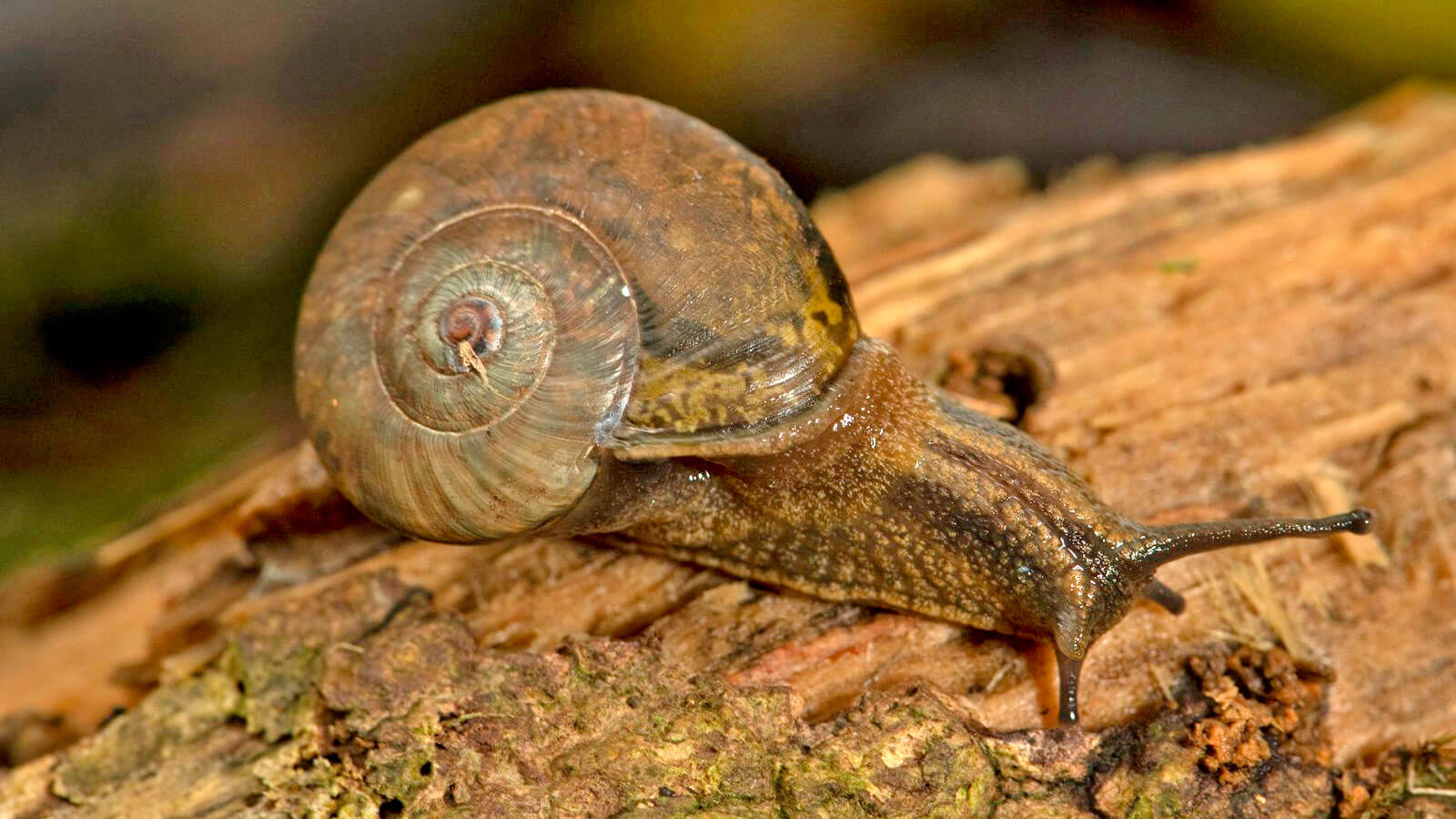A survey of the snails on Lord Howe island earlier this year was punctuated with shouts of excitement when researchers found three rarely seen species.
Dr Isobel Hyman, Dr Frank Köhler and team member Junn Foon from the Australia Museum, made some important discoveries on their most recent trip to Lord Howe island, in April this year.
Since rodents were eradicated on the island in 2019, surveys by the Australian Museum have revealed significant increases in abundance of some of the larger snails. Researchers have lived in hope that smaller, and rarer species would also be found.
Their prayers were answered when earlier this year they found a specimen of the Magnificent Helicarionid Land Snail, Gudeoconcha sophiae magnifica (shown above). This snail has a large, 4cm shell and a body of beautiful shades of brown and black – and has not been seen on the island since 2002.
But there were more cries of joy when they discovered a specimen of one of the smallest species on the island, the Lord Howe Microturban (Montierisaa gowerensis), last recorded in 1913. Even greater elation followed when they found one of the rarest and most poorly known species on the island (Deliciola charis), previously thought to be extinct.
Overall, the expedition proved to be a great success, demonstrating that many of the positive outcomes after the removal of rats are still to be recognised. On a cautionary note, increasing numbers of invasive, predatory flatworms (which prey on these snails) were also recorded.
Positive outcomes after the rat eradication are being recorded all over the island. According to Hank Bower, of the Lord Howe Island Board: “What is unfolding is an ecological renaissance. Since the rodents have gone, the catchphrase is: ‘I’ve never seen that before’.”
Bower said. “There’s a vine which we didn’t know what the fruit looked like, people are taking photos of insects and sending them to the Australian Museum who are saying we’ve only got three of those on record ever but we are seeing hundreds of them. Everything is blooming, all the plants are flowering and we are seeing a carpet of seedlings.”






